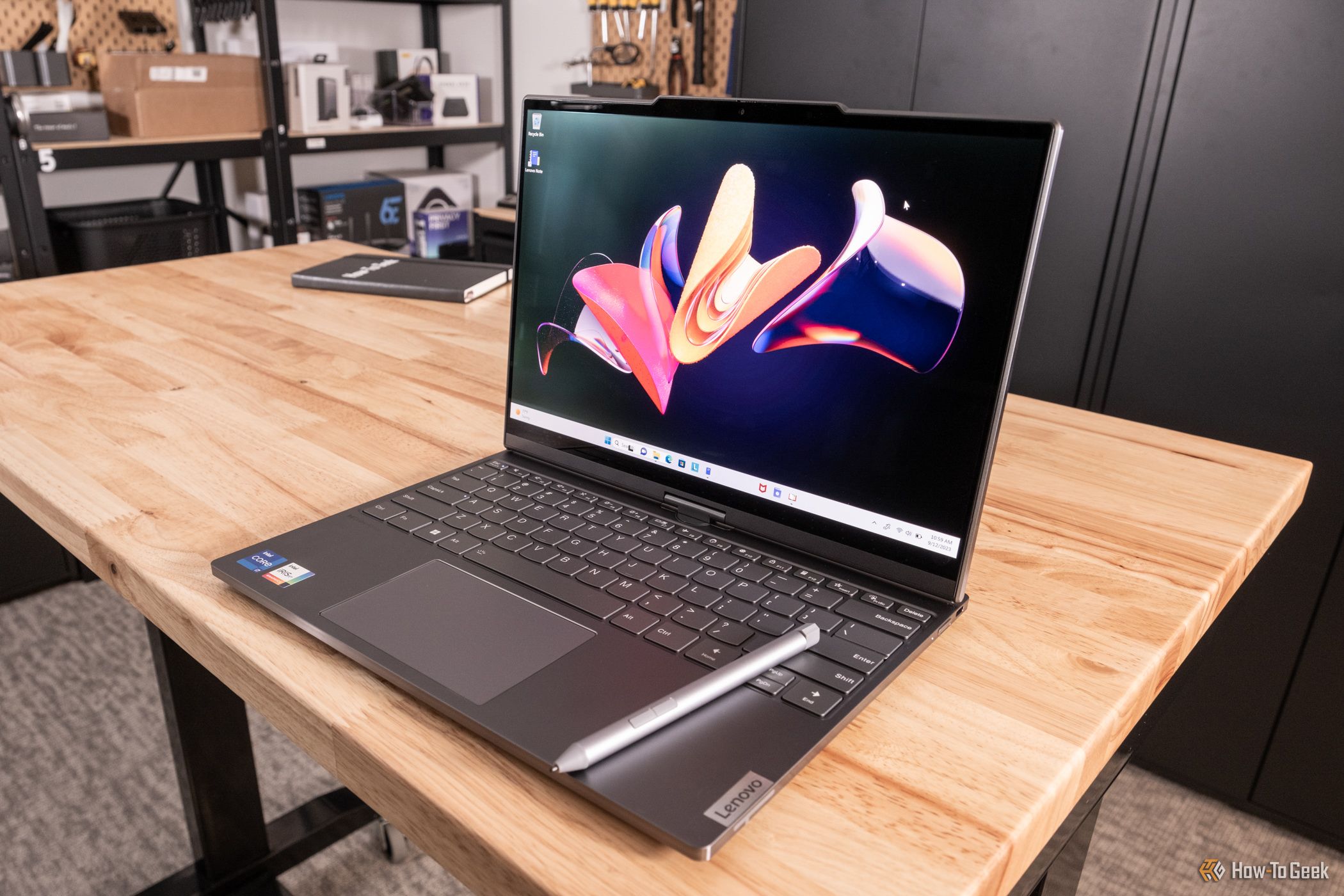
Unboxing the Lenovo ThinkBook Plus Gen 4 – A Surprising Overhaul of What's Expected From a 2-in-1 Laptop?

Unboxing the Lenovo ThinkBook Plus Gen 4 – A Surprising Overhaul of What’s Expected From a 2-in-1 Laptop?
Key Takeaways
- The Lenovo ThinkBook Plus Gen 4 is a hybrid laptop with dual displays, but it is expensive and may not be worth the price.
- The OLED display on the ThinkBook is stunning and perfect for graphic design and media consumption.
- However, the E-Ink display is not practical for most users, with noticeable ghosting and poor responsiveness, and the battery life is disappointing.
The Lenovo ThinkBook Plus Gen 4 2-in-1 Laptop is a hybrid laptop with a lot of attitude. Built for small-business owners, students, and photo/video-heavy workflows, the easy-swap dual displays may look cool, but two screens make this machine super-expensive. Lenovo may have overstepped with this one.
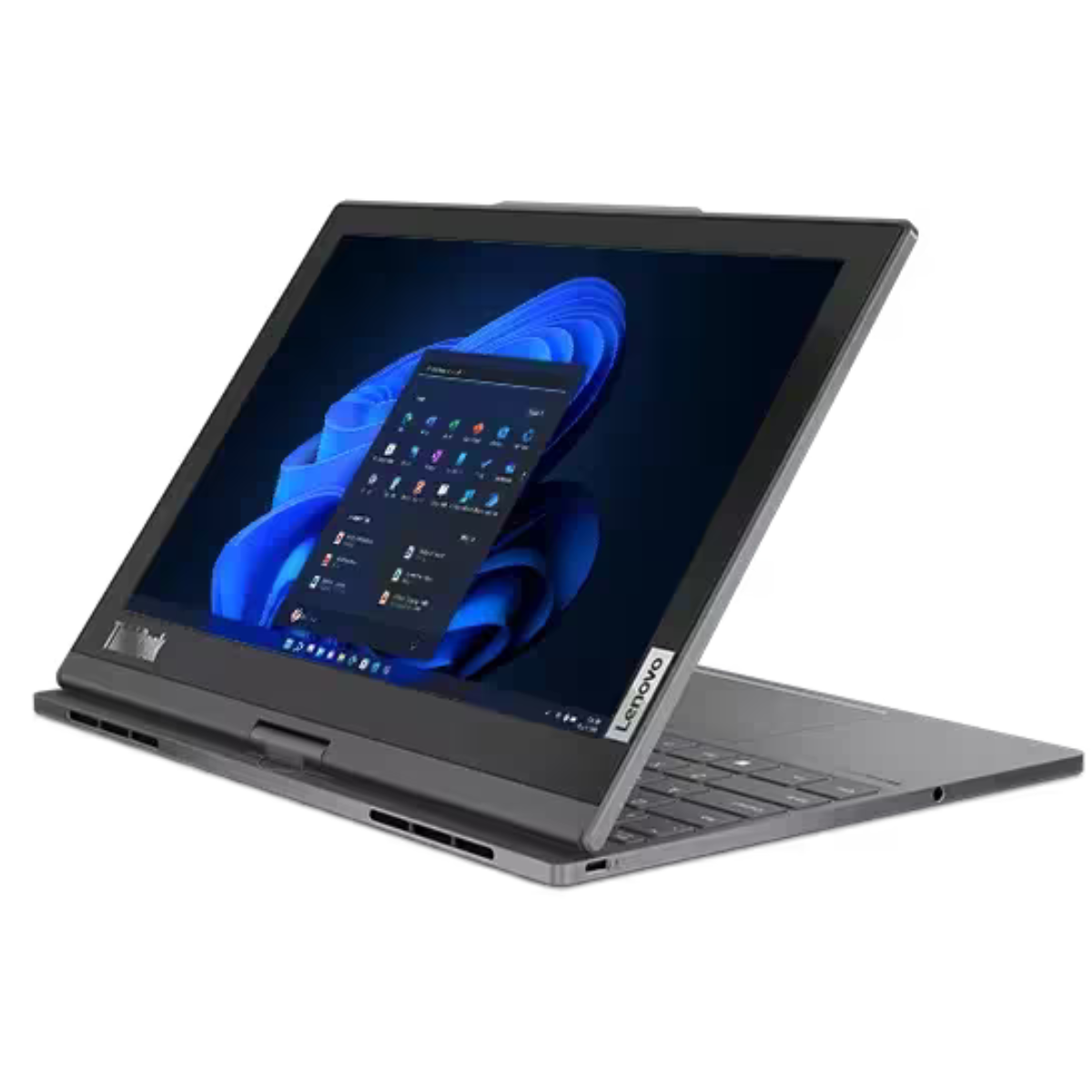
Lenovo ThinkBook Plus Gen 4 2-in-1 Laptop
6/ 10
The Lenovo ThinkBook Plus Gen 4 is fun to use, but beyond its arresting OLED display and buttery-smooth UI, this hybrid laptop falls short in several ways. Plus, have you seen the price tag on it?
Operating System
Windows 11 Pro
CPU
Core i7-1355U
RAM
16GB
Storage
512GB
Battery
56Whr
Display (Size, Resolution)
13.3-inch OLED (2880 x 1800), 12-inch e-ink (2560 x 1600)
Camera
1080p
Dimensions
0.69 x 11.69 x 8.62 inches (17.7mm x 297mm x 219mm)
Weight
2.98lbs (1.35kg)
Price
$3,040
Brand
Lenovo
Model
ThinkBook Plus Gen 4
Connectivity
Wi-Fi 6E, Bluetooth 5.1, TB4/USB-C (2x)
Pros
- Gorgeous OLED display
- Solid performance
- A novel approach to a hybrid laptop
Cons
- Borderline unaffordable
- Lots of ghosting on the e-ink screen
- Poor battery life
- Puts out a lot of heat
Expand
$3040 at Lenovo See at Walmart
Design: Ingenuity in Full Force
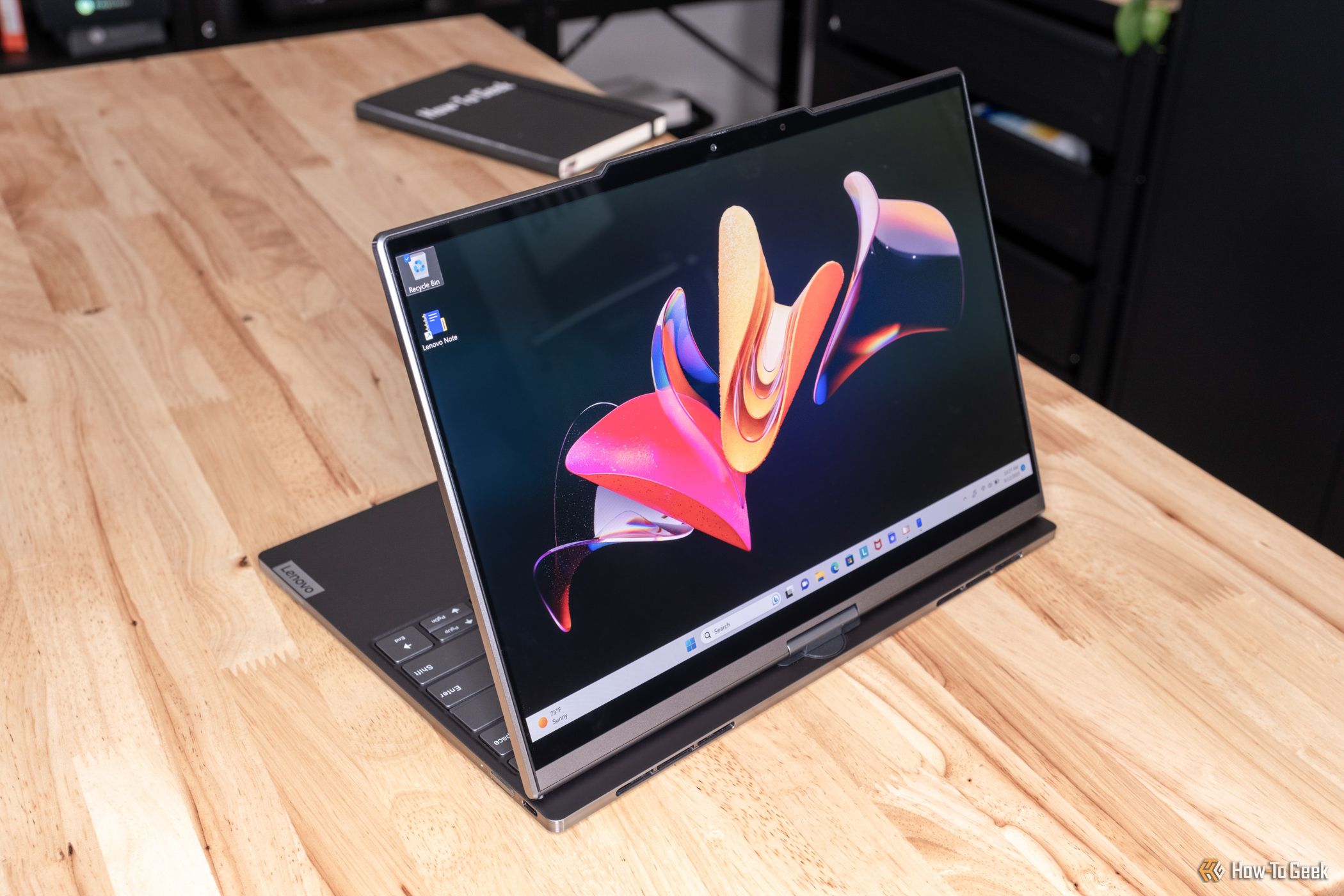
Joe Robinson / How-To Geek
As a hybrid laptop , the ThinkBook Plus Gen 4 trends a bit toward the heavy side. Folded up, it doesn’t feel strenuous to hold and carry around, but it definitely feels like you’re holding two screens, one on top of the other. The front-facing display is a 13.3-inch OLED, while a 12-inch color E-Ink panel hangs out underneath. The catch? They share the same housing, which leads us to perhaps the most noteworthy feature of the ThinkBook—the screens rotate.
Thanks to a centralized 360-degree swivel mechanism, you’ll be able to rotate in one screen, while rotating out the other. Why would you want to switch from OLED to E-Ink? Maybe you’re trying to conserve battery, or you’d like to read an extremely long PDF on a screen that looks more like the pages of a book. Most surprisingly, the act of rotating the screens around felt relatively smooth and worked without a hitch whenever I tagged a new screen in.
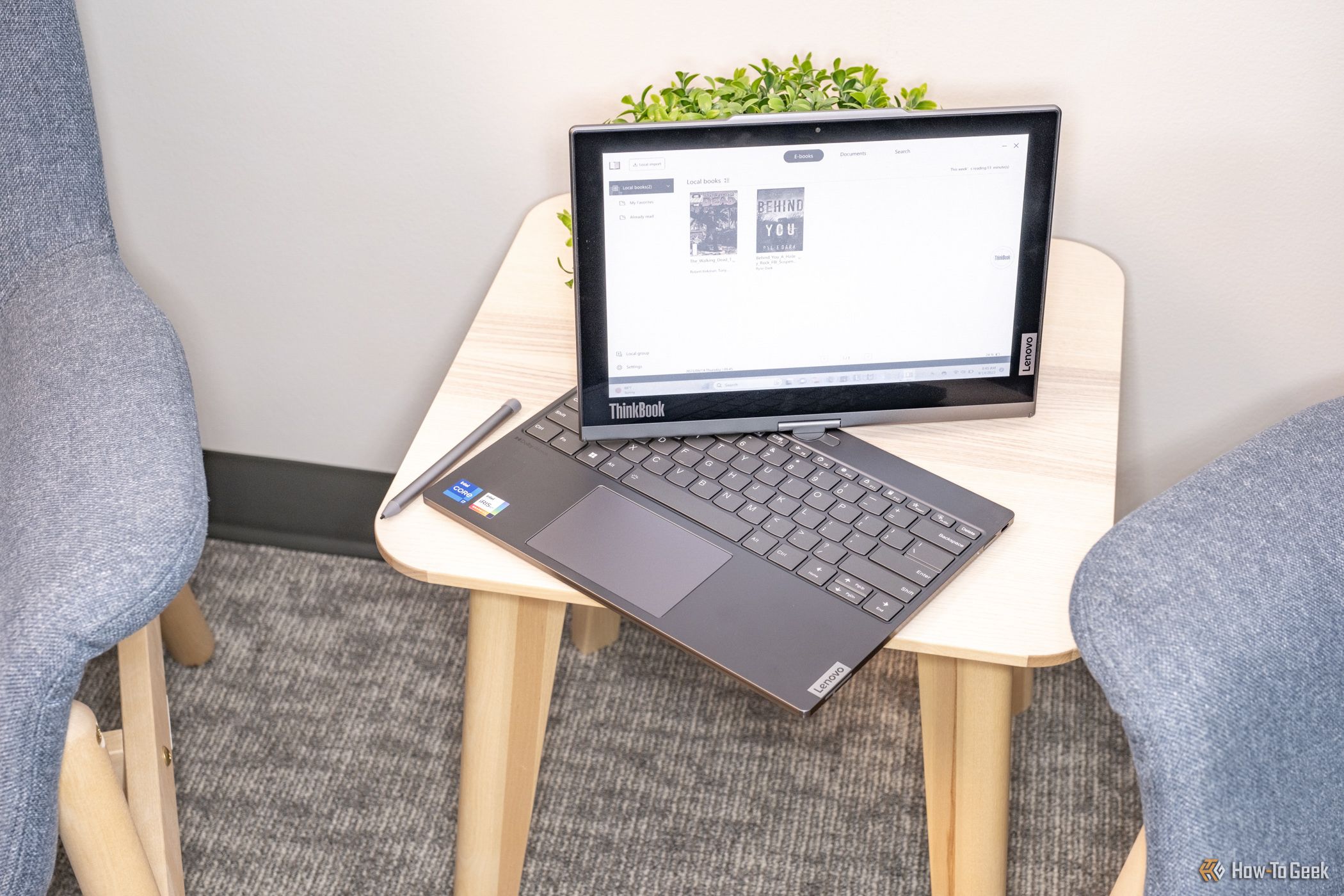
Joe Robinson / How-To Geek
The ThinkBook manages to accommodate both displays while still looking classy, too. Most of the hardware is made up of displays and a keyboard, while the remaining chassis is a glossy black color. Along the edges of the device, you’ll find two Thunderbolt 4 (TB4) USB-C ports, a power button that doubles as a fingerprint scanner, and a 3.5mm line-in. The laptop comes with a USB-C dongle that gives you an HDMI output and a USB-A port.
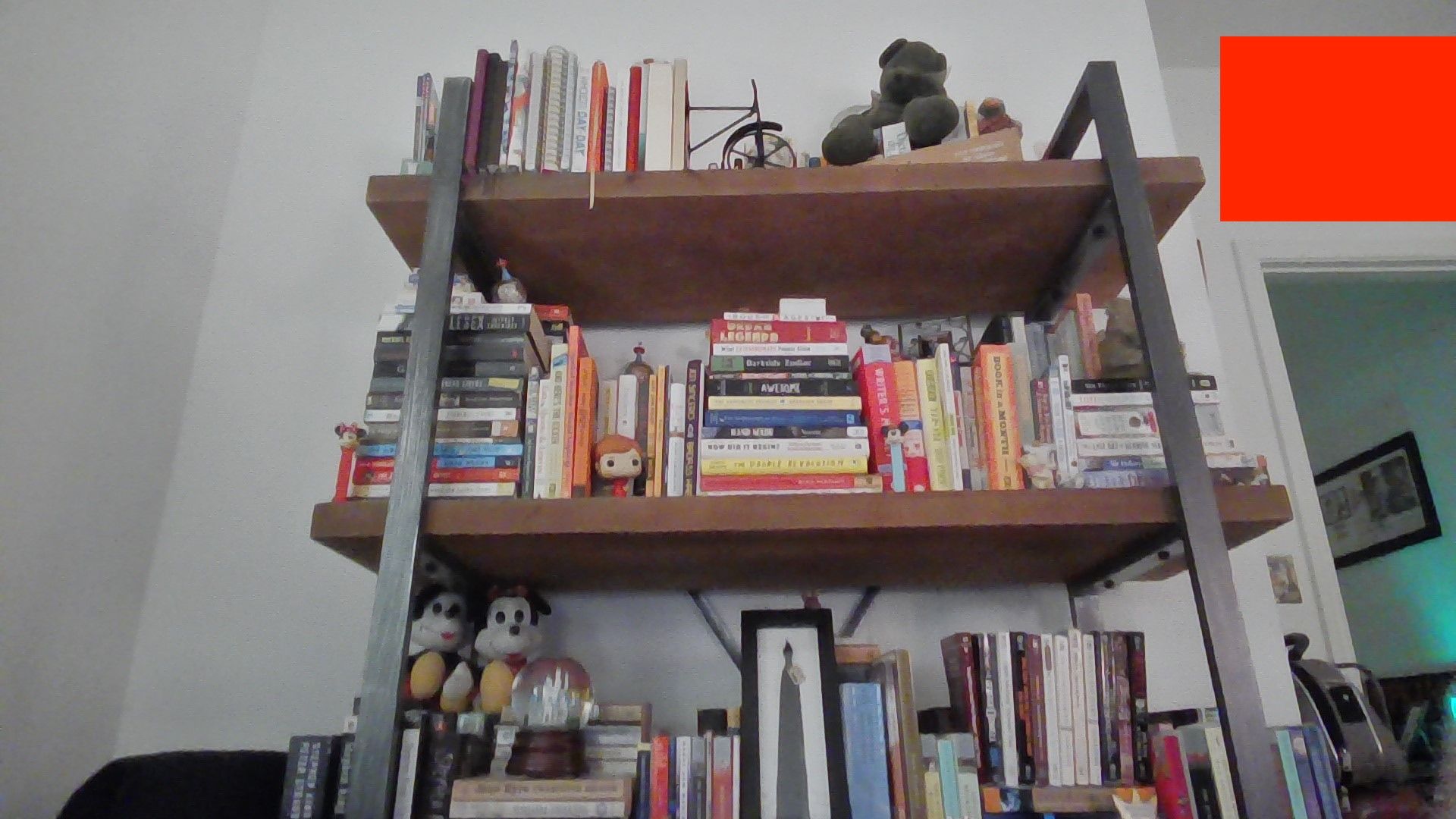
A photo taken with the Lenovo ThinkBook Plus Gen 4’s webcam
There’s a 1080p webcam at the top of both the OLED screen and another lens on the E-Ink display, both of which deliver decent image quality for all your video-conferencing needs. Yes, you’ll be able to take video calls using the E-Ink panel, although I’m guessing most folks will opt for the OLED.
You’ll also find heat-venting grilles along the rear bezel of the keyboard housing, as well as underneath.
Display(s): The E-Ink Screen is Haunted
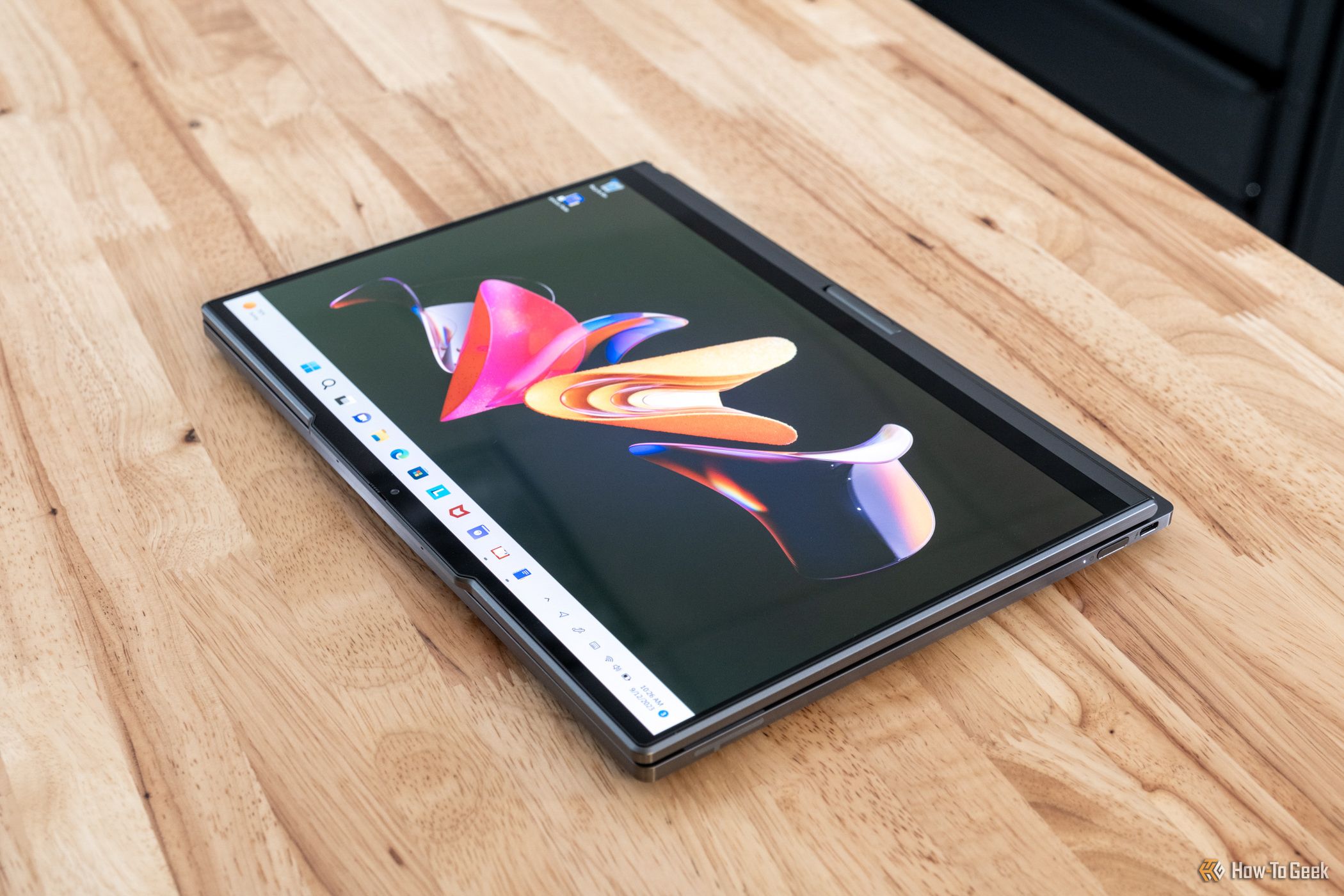
Joe Robinson / How-To Geek
I liked that both screens could rotate in for full keyboard functionality, but it was just as simple to fold the display housing down over the keyboard for tablet usage.
Between both displays, I suspect the 2,880 x 1,800 OLED is going to be most folks’ screen of choice. I always expect big things from an OLED display, and the ThinkBook didn’t let me down. With its wide color gamut, excellent contrast, and great motion clarity, the ThinkBook’s main screen is perfect for graphic design and photo or video editing. Better yet, it’s also a great display to watch videos from Netflix, Prime Video, and YouTube.
I’m a sucker for the latter’s 4K HDR test reels, and the lush and vibrant wildlife of Costa Rica in UHD never looked so good on a screen this small. The OLED’s refresh rate tops out at 60Hz, which should be more than enough for most media and applications. That being said, gamers may pine for 120Hz or 144Hz performance. I also thought the Lenovo Base Pen worked naturally with both screens. Personally, I preferred using the touchscreen with my fingers, but I thought the pen was great for note-taking and doing a bit of doodling.
Unfortunately, it’s a bit downhill from here, at least as far as screens go. I actually don’t think the E-Ink display is a good match for the ThinkBook’s core demographic, which is small business owners, students, and graphic designers who need a portable workstation. This is too bad because, on paper, the idea of a full-color E-Ink screen is an appealing way to save battery, and to read long-form documents in a way that doesn’t kill your eyes.
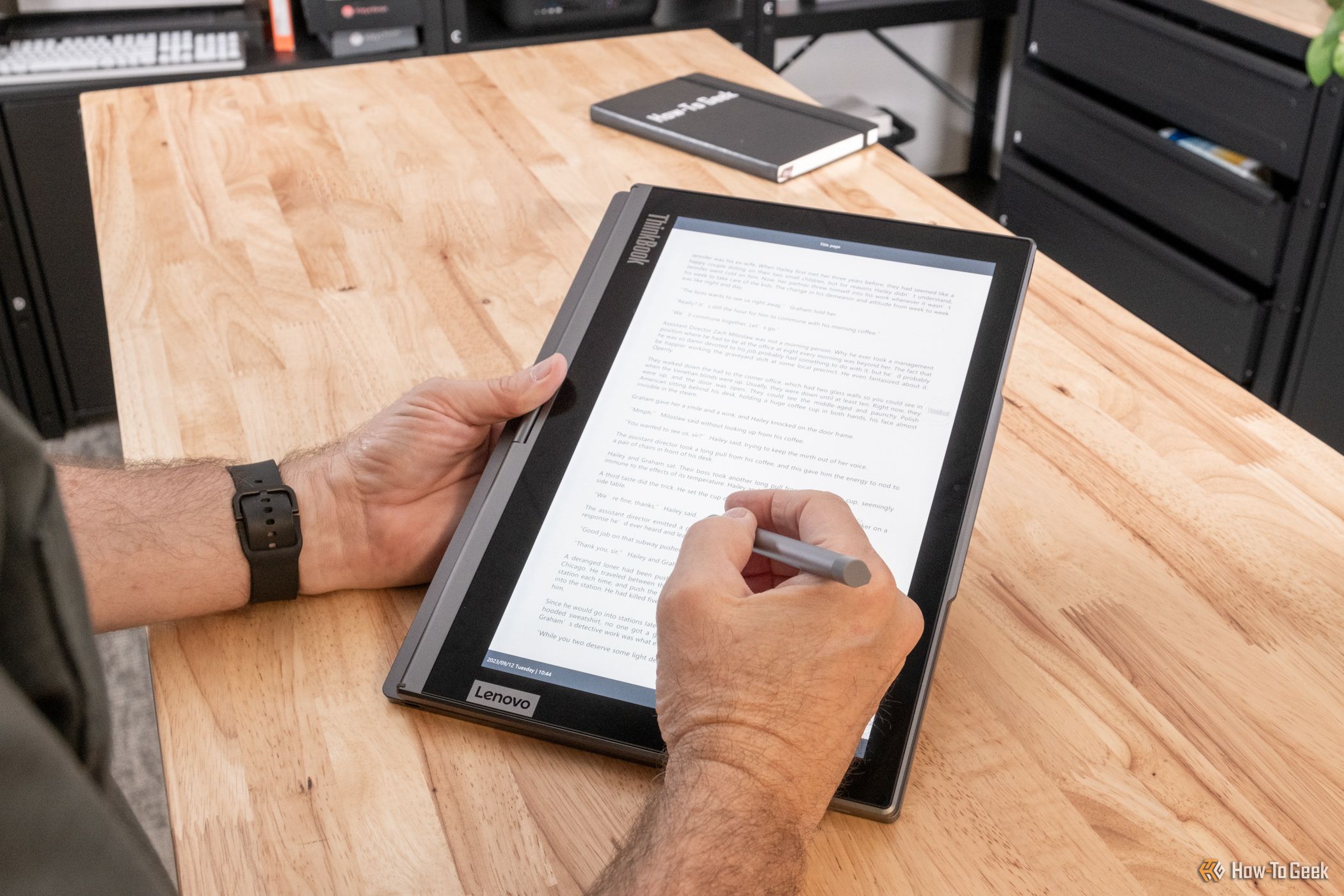
Joe Robinson / How-To Geek
At 2,560 x 1600, (a step up from the ThinkBook Gen 2’s black-and-white E-Ink panel), the ThinkBook’s enhanced pixel count and colorized display were more than I expected from an E-Ink display. I certainly appreciated my read-through of Poe’s “The Tell-Tale Heart” on the E-Ink screen, but there’s a big difference between recreational reading and urgent workplace needs.
I would never think to use the ThinkBook’s screen for anything other than on-my-own-time entertainment, mostly because of how bad the ghosting is on the display. I wasn’t expecting the precision and responsiveness of the flip-side OLED, but when you combine the typical lag of an E-Ink screen with one of the ThinkBook’s biggest cons (the ghosting), the results weren’t great.
Lenovo did think to include a manual refresh button, but at best, it only clears up around 60% of the temporary ghosting at a time. Admittedly, I switched to the OLED to finish reading “Tell-Tale”because I was so tired of all the refreshing I had to do.
Audio: Satisfactory
The ThinkBook has two down-firing speakers that push a decent amount of sound. I put the laptop through some hard-hitting late ‘80s live Metallica, mostly to see how the speakers could handle max volume with heavier genres. I was impressed, to say the least. There wasn’t any distortion, even at the highest volume level. Somewhere between a 40 and 50 percent volume is going to be comfortable for most folks.
As far as frequency representation though, the ThinkBook’s speakers aren’t taking home any awards. There’s very little bass to be had, and most of the EQ gets lumped into the upper mid-range.
Performance: Smooth Sailing for the Most Part
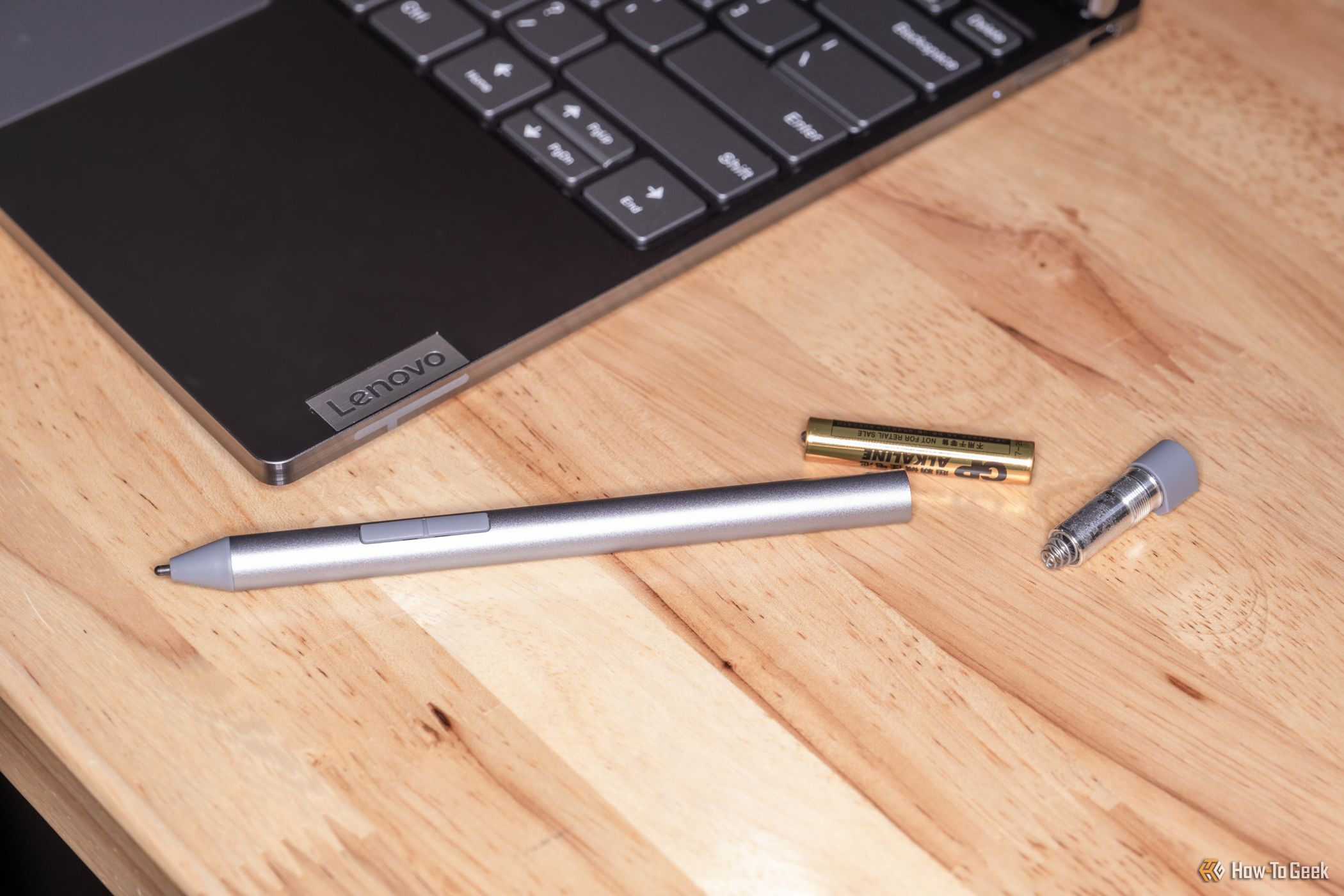
Joe Robinson / How-To Geek
In terms of configurations, you’ll have the choice of a 13th Gen Intel i5 or Core i7 processor (my test unit) for your ThinkBook Plus Gen 4. The laptop runs Windows 11 Pro , with 16GB of RAM soldered to the motherboard. Both CPU versions also come with 512GB of internal storage.
I had no issues with the ThinkBook’s performance. My preferred setup was the OLED screen in laptop mode, and it did everything I needed it to do. In fact, I intentionally ran an unnecessary number of apps at the same time, along with several browser tabs. One of the tabs was looping a 4K HDR video, while another was running an interactive weather radar. Bouncing from apps to webpages was trouble-free, although I did have to contend with some delay whenever I would launch a new app. I thought this was surprising, especially for a Core i7 machine.
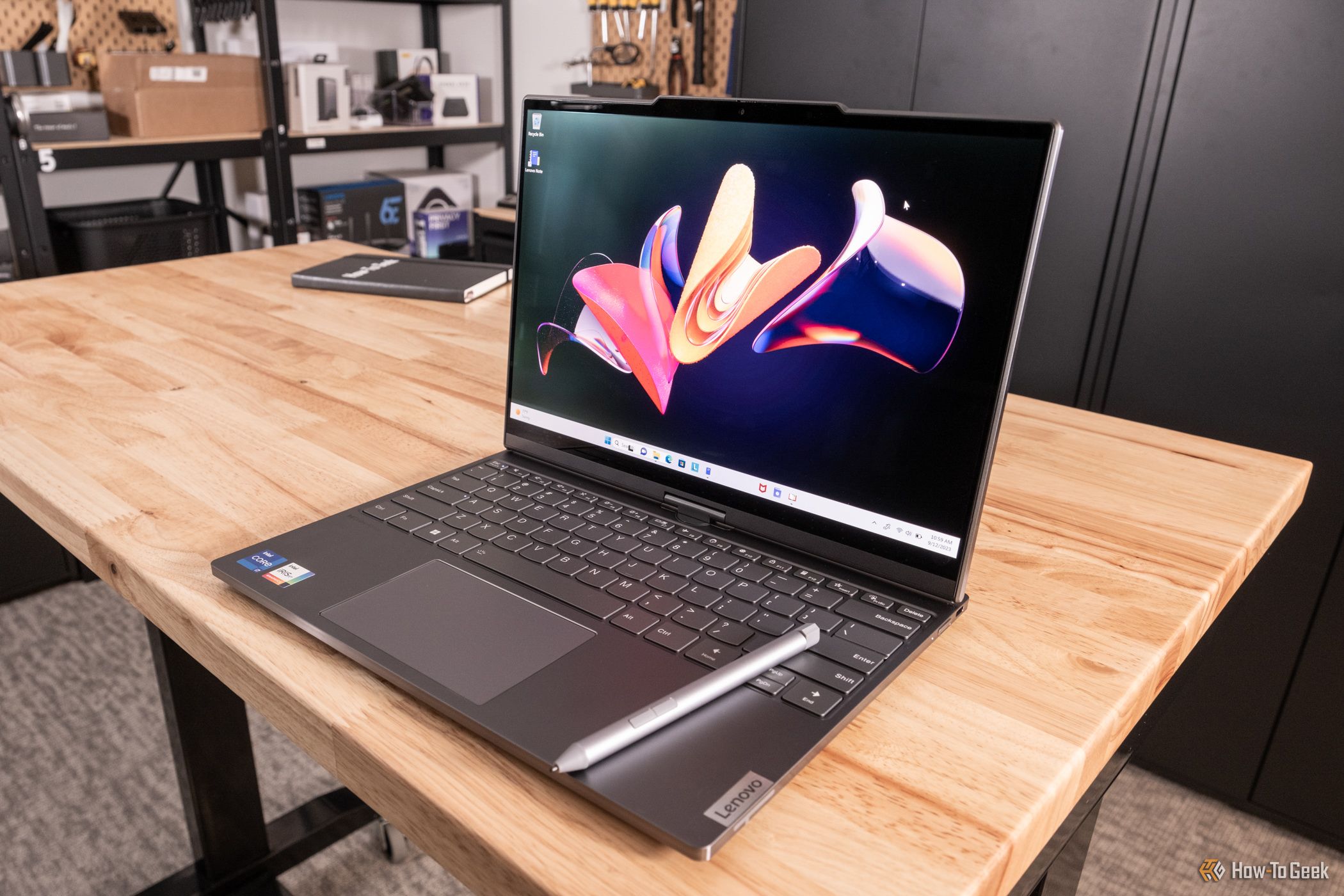
Joe Robinson / How-To Geek
At close to $3,100, I really wanted to feel the power of the i7 and that 16GB of RAM though. This isn’t to say that the ThinkBook disappointed, but I get just about the same responsiveness from my late 2020 13-inch MacBook Pro with the Apple M1 chip, and that computer only set me back $1,300.
A word of warning: The ThinkBook got very warm. I wasn’t expecting my throw-everything-at-it test to return cool-to-the-touch results, but even when I just had a couple of tabs open, with one of them displaying a PDF, I thought the laptop was toasty. The temperature climbed even higher when I plugged in the ThinkBook’s 65W charger.
Battery: Don’t Leave Home Without a Charger
I think one of the big calling cards of the ThinkBook’s E-Ink display is that it’s supposed to be great at preserving the laptop’s battery life. Unfortunately, that’s not really the case. Whether you’re using the OLED screen or the E-Ink panel, the ThinkBook absolutely devours battery.
In about half an hour, my test unit went from 42% battery life to 29%. Admittedly, I had three different 4K videos going at the same time, so I switched to web browsing only. With just a couple of basic web pages open, the ThinkBook dropped from 29 percent to 25 percent in less than half an hour.
I don’t think I’d want to go anywhere without the laptop’s 65W charger, especially if you’re going to be using the ThinkBook as your everyday workplace peripheral. Back when I reviewed the Lenovo Tablet Extreme , I had a great charging experience with Lenovo’s 65W brick, and the accessory didn’t let me down with the ThinkBook either.
During one charging test, I plugged the ThinkBook in at 5:15PM with 24 percent battery remaining. At 5:59PM, the battery was up to 77%. It’s also nice to have the 65W brick on hand for smartphones and other gear.
Should You Buy the Lenovo ThinkBook Plus Gen 4?
The Lenovo ThinkBook Plus Gen 4 is an odd combination of “too much” and “too little.” Lenovo’s asking for too much dough from a very niche demographic, and the inclusion of two screens just isn’t necessary. The E-Ink screen is also pretty much impossible to operate in the first place.
There’s also too little going on in the performance department. This is a Core i7 machine with 16GB of RAM after all, so I expected at least lightning-fast load times (which the laptop could barely manage).

Lenovo ThinkBook Plus Gen 4 2-in-1 Laptop
6/ 10
The Lenovo ThinkBook Plus Gen 4 is fun to use, but beyond its arresting OLED display and buttery-smooth UI, this hybrid laptop falls short in several ways. Plus, have you seen the price tag on it?
$3040 at Lenovo See at Walmart
Also read:
- [Updated] 2024 Approved Clearing Up Audio Issues in Half-Volume Facebook Content
- [Updated] 2024 Approved Utilizing Internal Screen Recording on Huawei's Mate 10/20 & P Models (P20, P10).
- [Updated] Aerial Imaging Warfare DJI's Pro Vs GoPro K20
- [Updated] Top iPhone Filming Software Catalog
- [Updated] Unveiling the Essence Filmora’s Top 10 Enchanting Features
- 2024 Approved Exclusive Insights Unlock the Secrets to Screen Capturing Games
- 2024 Approved Techniques for Tidying Up Image Backdrops
- 2024 Approved The Metrics of Mastery Assessing Luminance's HDR Capabilities
- In 2024, Easy Steps on How To Create a New Apple ID Account On Apple iPhone 13 Pro | Dr.fone
- In 2024, How to Hide/Fake Snapchat Location on Your Lava Storm 5G | Dr.fone
- In 2024, The Watchers' Whispers Essential Websites for GoT Sound Files
- In 2024, Top 10 Sci-Fi Metaverse Movies Take You to a Brand New World
- Perfecting Every Shot's Hue The Essential 11 Tutorials on Color Adjustment
- Title: Unboxing the Lenovo ThinkBook Plus Gen 4 – A Surprising Overhaul of What's Expected From a 2-in-1 Laptop?
- Author: Mark
- Created at : 2024-12-24 01:30:53
- Updated at : 2024-12-24 18:18:26
- Link: https://some-guidance.techidaily.com/unboxing-the-lenovo-thinkbook-plus-gen-4-a-surprising-overhaul-of-whats-expected-from-a-2-in-1-laptop/
- License: This work is licensed under CC BY-NC-SA 4.0.